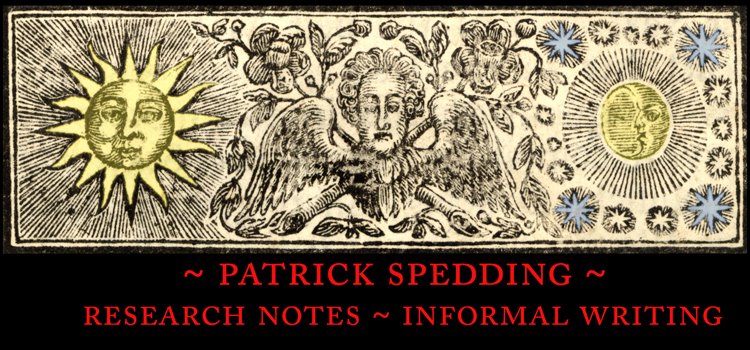Yesterday, I discovered an 1836 reprint of this Bowdlerised Newell edition, also published in Boston, this time by James Loring (1770–1850). The title has been changed to The Young Bride at Home: Or, A Help to Connubial Happiness: with a Comparative View of the Sexes.
Two copies of the book are available online (here and here), attributed to Hannah More (1745–1833), since her name is attached to the Comparative View of the Sexes which occupies the final nine pages of the text.
As far as I can tell, nobody has previously recognised The Young Bride at Home as a reprint of Haywood's The Wife or Newell's Bowdlerised reprint of the same. But the discovery that The Young Bride is a reprint of Newell's Bowdlerised edition will now make it possible for Haywood scholars to compare the two texts, who did not have access to one of the five copies the Boston edition (all in US libraries), or to the 1983 History of Women microfilm collection which contains it.
Because The Young Bride is a nineteenth-century reprint of Ab.70 The Wife, the OCR rendering of it is almost perfect, unlike the two eighteenth-century editions on Google Books—a “plain text” view of either of which offers no text at all, just page images, though the text appears when you do a general Google-search.
* * * * *
Below is an example of what I mean, taken from [1] Ab.70.1 (the 1756, 1st, ed. here), [2] Ab.70.4 (the 1773, 3rd ed. here), the [3] British Library here and [4] Harvard University copies here of The Young Bride
[1] ' 5 Sir, It is a fancy which all good subc' jects and true protestants must approve 5 e and I think you have no pretence to -* find fault with my fancy; .-- you, who ' yesterday thought yourself very fine, I 5 suppose, in the livery of a highland S ragamuffin, a silly flOWer with scarce Fany smell or "taste, and a bundle of a stinking leaves for a cockade!
[2] Sir, 'it-is a fancy which all. good subzfijects and true protestants must approve; '* and l-think you have no pretence' to 'Ofind faultwith my fancy ;-you, who '*- yestirirdasthought yoursels veryfine, I * suppose, in the livery of a highland ' ragamuffin, a sllly- flower with scarce Aianysssrncillrz or taste, and a bundle of it stinking leaves' for a cockade i'
[3] ‘Sir, it is a fancy which all good subjects and true protestants must approve; and I think you have no pretence to find fault with my fancy; you, who yesterday thought yourself very fine, I suppose, in the livery of a Highland ragamuffin, a silly flower with scarce any smell or taste, and a bundle of stinking leaves for a cockade l’
[4] 'Sir, it is a fancy which all good subjects and true protestants must approve; and I think you have no pretence to find fault with my fancy; you, who yesterday thought yourself very fine, I suppose, in the livery of a Highland ragamuffin, a silly flower with scarce any smell or taste, and a bundle of stinking leaves for a cockade!'
There are 333 characters (including spaces) in this passage: there are no errors in the Harvard University copy, one in the British Library copy [=3 errors per thousand characters], but eight in Ab.70.1 [24 per thousand] and forty-three in Ab.70.4 [129 per thousand]—the main errors being adding random characters and running together text.
* * * * *
The above example from The Young Bride indicates how much of the text remains unchanged. I compared the whole of this section (SECT. III. Difference of opinion in affairs of Government), to the same section from the text, as edited for the Pickering and Chatto edition. While the word-count varies somewhat, depending on hyphenation and so forth, there are approximately seventeen hundred and thirty words in this section: the Boston edition adds ten words, and cuts forty-five, reducing the length by roughly two percent.
The change in length is minor, and many of the changes are inconsequential: “talk on those affairs” becomes “converse on these subjects”; “endued with” becomes “possessed of”; “without all question” becomes “without doubt”; “these sheets” and “close this section” becomes “these pages” and “conclude these remarks.”
The consequential changes are the ones which indicate modernising: by de-emphasising the immediacy of events (“About the middle of last May” becomes “Not long since”), the politics (“flagrant marks of Jacobitism” and “harmless Jacobites” becomes “political marks” and “harmless politicians”)—“King GEORGE, and the Hanover succession” is retained as a rallying cry since a succession of Hanoverian Georges occupied the throne from 1715 to 1830!—and toning down the sex (“the man, in whose arms she lies” becomes “the man, who is the object of her affections” and “feasting and visiting took up their days, and love engross'd their nights” is shorn of its love-engrossed nights all together. So much for “Connubial Happiness”!).
* * * * *
That Haywood's work continued to find an audience in 1836 (eighty years after her death) suggests the continuing appeal of her writing, independant of any appeal she may or may not have had as a writer. This 1836 edition is now the latest of any Haywood work before the modern revival of interest in her, and the latest in the main section of my Bibliography, post-dating Ab.36.7 The Fruitless Enquiry (1819). The code for The Young Bride at Home is / will be Ab.70.6.



No comments:
Post a Comment